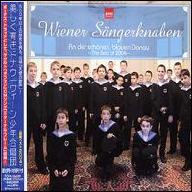The choir dates back to June or July of 1498 when Holy Roman Emperor Maximilian I issued a decree specifying that boys' voices should be the singers of the court chapel at the Hofburg Palace; the boys perform at Sunday masses there to this day. Composers who have written for the Boy's Choir include Mozart, Schubert, and Bruckner, and conductors Clemens Krauss and Hans Richter are among the choir's many distinguished musical alumni. At the height of Austro-Hungarian imperial power, the choir often performed secular concerts in military-style uniforms complete with daggers. That came to an end as the empire dissolved after World War I, but a chaplain at the court, spending his own money, reassembled the choir and created a new image featuring sailor uniforms.
The choir gradually gained international popularity, making the first of more than 50 U.S. tours in 1932. In 1948, choristers began attending their own boarding school at the Augarten Palace. In 1961, the choir appeared in the Walt Disney film Almost Angels; the Austrian national emblem on their uniforms dates back to that film. The Vienna Boys' Choir has toured all six inhabited continents, with the membership of 100 singers divided into smaller groups that are on the road for three months at a time, with a tutor and nurse. Together, the Vienna Boys' Choir groups perform about 300 concerts a year.
The Vienna Boys' Choir has had a long history of recordings. Its repertory has modernized somewhat under Gerald Wirth, who became its director in 2001; recordings since then have included Vienna Boys' Choir Goes Pop (2002) and A Jewish Celebration in Song (2004). The choir's Christmas albums are especially popular and include Weihnachten mit den Wiener Sängerknaben (Christmas with the Vienna Boys' Choir, 2019). ~ James Manheim, Rovi













